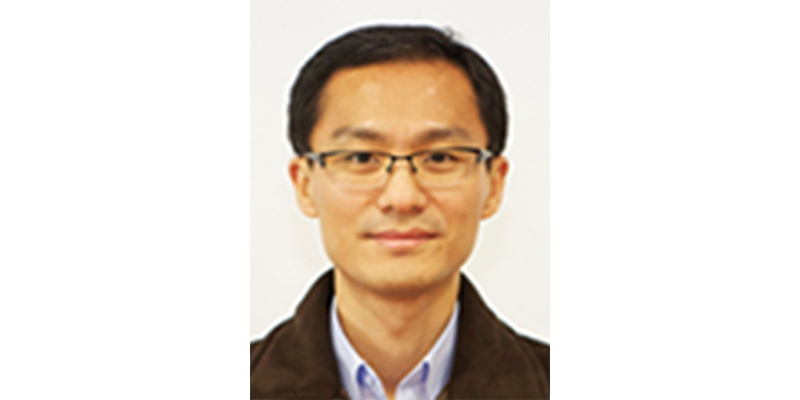커뮤니티
부경투데이
- 국립 부경대학교의 다양한 모습과 소식을 접하시면 부경대학교가 한번 더 가까워집니다.
| 갑상선 수술 최대 난제 풀었다( The biggest challenge of thyroid surgery finally solved) | |||
| 작성자 | 대외협력과 | 작성일 | 2023-08-10 |
| 조회수 | 605 | ||
| 갑상선 수술 최대 난제 풀었다( The biggest challenge of thyroid surgery finally solved) | |||||
 |
대외협력과 |  |
2023-08-10 |  |
605 |
국내 연구진, 갑상선 수술 최대 난제 ‘부갑상선 보존’ 해결
- 부경대·고신대·UNIST 공동연구 … 식약처 허가 및 미국·중국 특허 등록

△ 안예찬 교수.
국내 연구진들이 갑상선 수술의 최대 난제 중 하나인 ‘부갑상선 보존’ 문제를 해결하는 데 성공했다.
국립부경대학교(총장 장영수)는 의공학전공 안예찬 교수팀이 갑상선 수술 중에 부갑상선을 보존하는 기술을 개발하고, 식약처 허가는 물론 국제 특허 등록을 완료했다고 밝혔다.
국내 발병률 1위 암인 갑상선암은 생존율이 높은 암에 속하지만, 갑상선 수술을 받은 환자에게 손발 저림, 입 주위 이상 감각, 가슴이 답답하거나 손이나 얼굴 등 신체 경련 등 증상이 나타나는 경우가 적지 않다.
이런 증상은 갑상선 수술의 가장 흔하고 중요한 합병증인데, 부갑상선 기능 저하에 따른 것이다. 부갑상선은 크기가 아주 작아 주변의 지방조직과 눈으로 구별하기 어렵고, 부갑상선을 찾아내더라도 이 미세한 장기의 혈류를 보존하는 것은 경험 많은 의사에게도 쉽지 않아 갑상선 수술의 최대 난제로 손꼽힌다.
이 같은 문제를 해결하기 위해 부경대 안예찬 교수는 고신대학교복음병원 이비인후과 이강대 교수, 울산과학기술원(UNIST) 바이오메디컬공학과 배성철 교수·김이근 박사와 공동으로 ‘갑상선수술 중 부갑상선 보존을 위해 눈에 보이지 않는 부갑상선을 근적외선 자가형광 영상을 이용해 탐지하는 기술’을 개발해냈다.
이 기술을 적용한 근적외선 영상 장비는 고감도 저잡음 성능을 기반으로, 매우 미약한 부갑상선 자가형광 신호를 불을 끄지 않은 채 탐지한다. 의사는 수술 중 실시간으로 부갑상선의 위치를 확인할 수 있어 장기를 보존할 수 있다.
연구팀은 올해 2월부터 지난 4일까지 이 원천기술에 관한 특허를 미국에 4건, 중국에 1건 등 연이어 등록하는 한편, 이 기술을 적용한 근적외선 영상 장비도 식약처로부터 제조판매 품목허가를 받고 의료수가도 인정받았다.
안예찬 부경대 교수는 “갑상선 수술의 최대 난제 중 하나를 해결하는 이 기술을 미중 특허로 등록하면서 세계시장 진출 기회를 확보했다. 특히 갑상선 수술 건수가 빠르게 증가하고 있는 중국시장의 주목을 받을 것으로 기대한다.”라고 말했다. <부경투데이>
Korean researchers have solved the problem of 'preservation of the parathyroid glands', the biggest challenge in thyroid surgery
- a joint research by PKNU, Kosin Univ. & UNIST... obtained MFDS approval and a US, China patent
Researchers in Korea have succeeded in resolving one of the biggest challenges in thyroid surgery, the preservation of the parathyroid glands.
Pukyong National University (President Jang Young-Soo) announced that a research team led by professor Ahn Ye-Chan from the department of biomedical engineering developed a technology to preserve the parathyroid gland during thyroid surgery and completed FMDS approval as well as international patent registration.
Thyroid cancer, which is the most common cancer in Korea, has a high survival rate, but patients who have undergone thyroid surgery often experience symptoms such as numbness in the hands and feet, abnormal sensations around the mouth, chest tightness, or body convulsions in the hands or face.
These symptoms are the most common and serious complication of thyroid surgery and are caused by hypofunction of the parathyroid gland. Since the size of the parathyroid gland is very small, it is difficult to distinguish it with the naked eye from the surrounding adipose tissue and even if the parathyroid gland is found, preserving blood flow to this tiny organ is not easy even for experienced surgeons, so it has been considered the biggest challenge in thyroid surgery.
To solve this problem, professor Ahn Ye-Chan at Pukyong National University developed a 'technology to detect invisible parathyroid glands using near-infrared autofluorescence imaging to preserve parathyroid glands during thyroid surgery' in collaboration with professor Lee Kang-Dae from the department of otorhinolaryngology at Kosin University Gospel Hospital and professor Bae Seong-Cheol from the Department of Biomedical Engineering and Kim Yi-Geun at the Ulsan National Institute of Science and Technology (UNIST).
Based on high sensitivity and low noise performance, near-infrared imaging equipment using this technology detects very weak parathyroid autofluorescence signals without turning off the lights. Since the surgeon can check the position of the parathyroid gland in real time during surgery, the organ can be preserved accordingly.
From February to the 4th of this month, the research team obtained approval from the Ministry of Food and Drug Safety for the manufacture and sale of near-infrared imaging equipment using this technology while registering four patents on this source technology in succession in the US and one in China.
Professor Ahn Ye-Chan at Pukyong National University, explained that, "by registering this technology as a patent in the US and China for solving one of the biggest challenges in thyroid surgery, we secured an opportunity to enter the global market. I expect that it will attract a lot of attention especially in the Chinese market where the number of thyroid surgeries is rapidly increasing." <Pukyong Today>